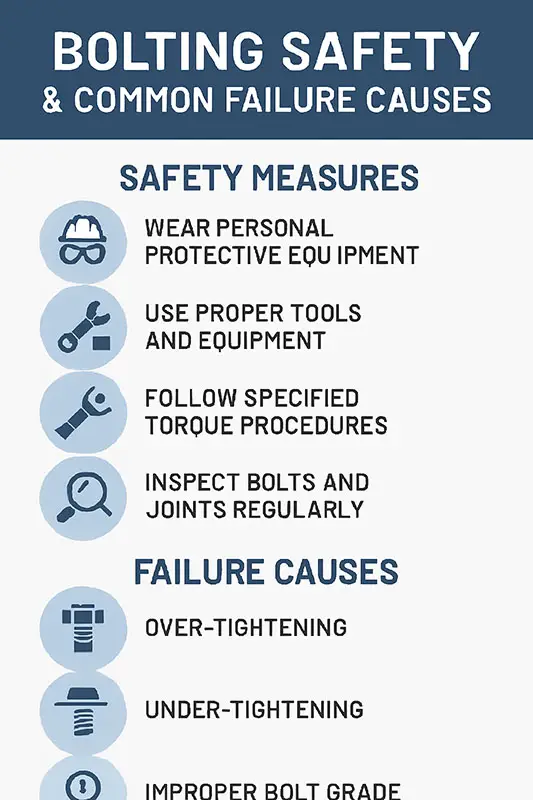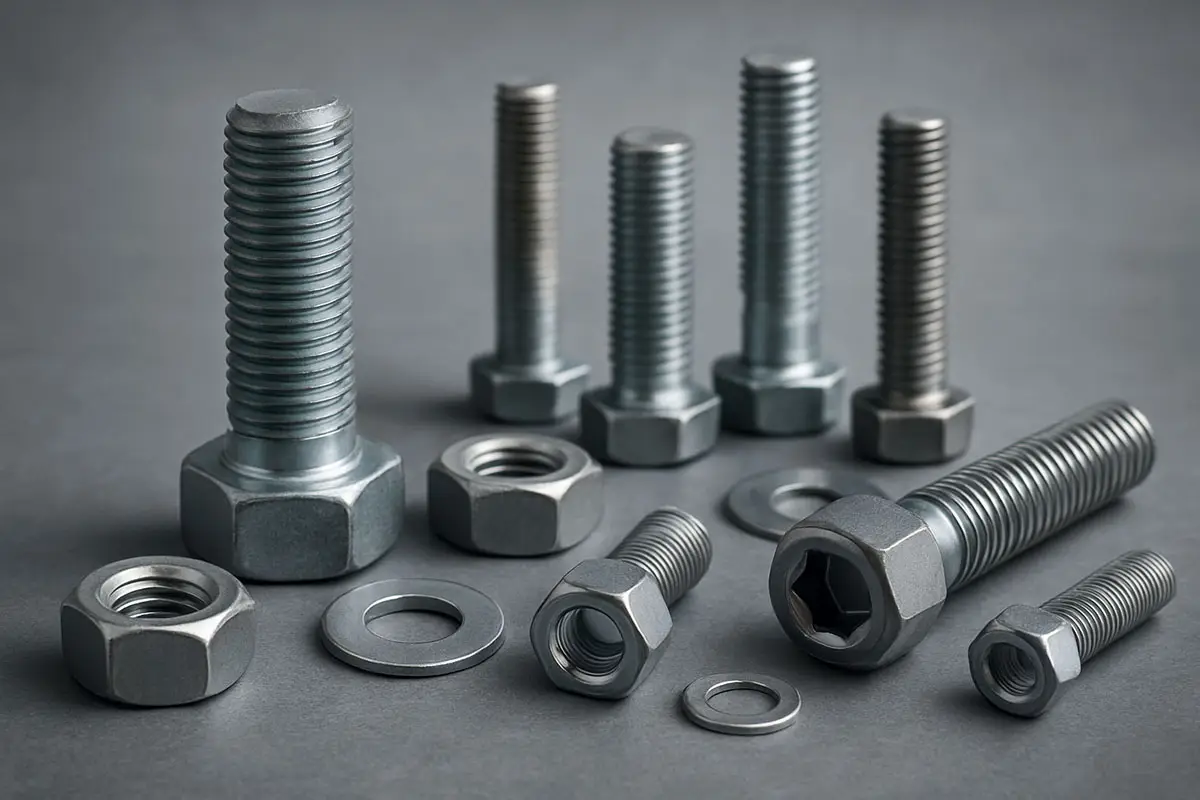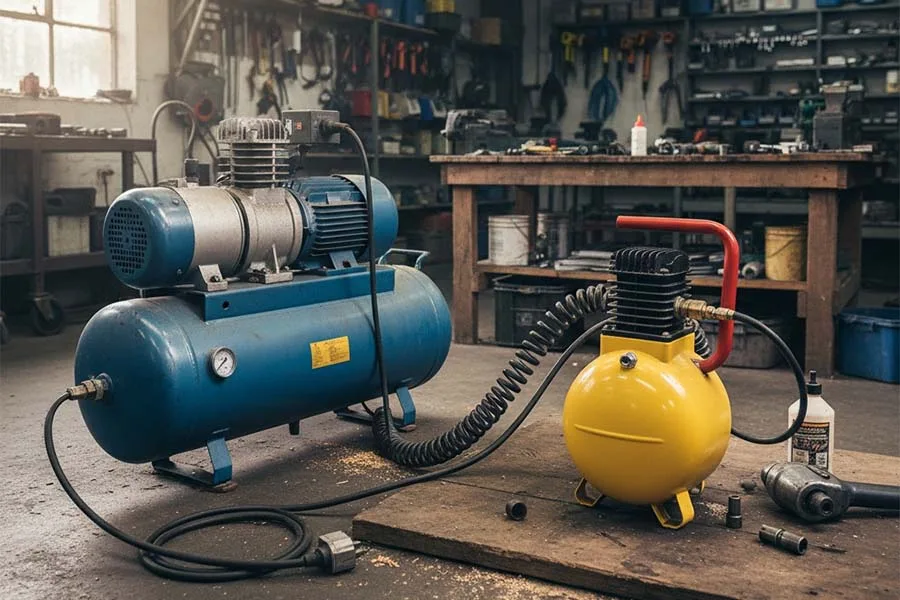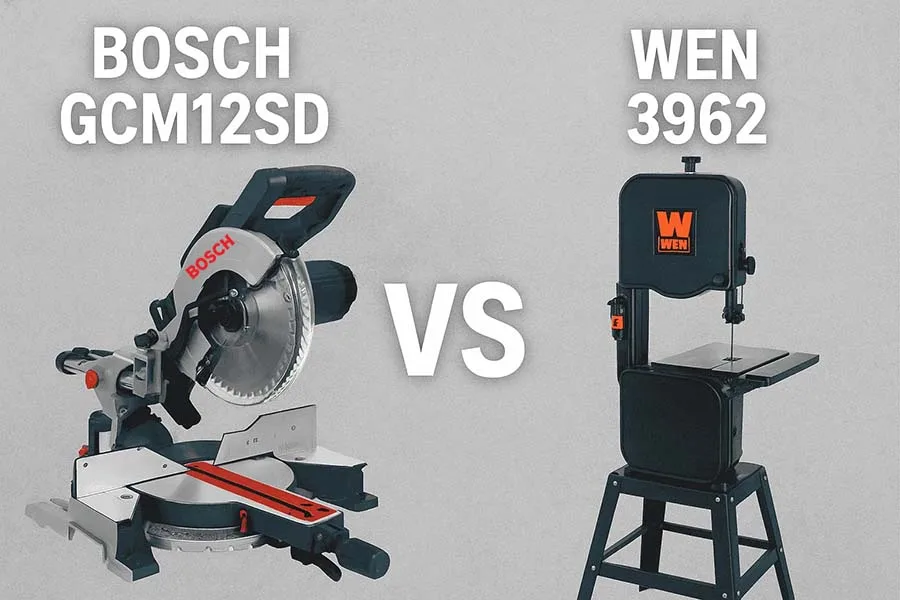Introduction: Why Fasteners Matter in Every Industry
From towering skyscrapers to tiny electronics, fasteners hold the world together—literally. But these little components do more than just “tighten things up.” They affect structural integrity, maintenance costs, worker safety, and even regulatory compliance.
This guide dives deep into the world of industrial fasteners and bolting solutions. Whether you’re an engineer, buyer, technician, or curious builder, you’ll find everything you need to understand, choose, and use fasteners effectively.
Fastener Types: The Big Five
🔩 1. Bolts
Bolts are externally threaded fasteners used with nuts to clamp components together. They’re the workhorses of mechanical assembly.
Common Types:
- Hex bolts
- Carriage bolts
- Flange bolts
- Eye bolts
🔩 2. Nuts
Nuts mate with bolts and are available in various styles for different environments.
Popular Nut Types:
- Hex nuts
- Lock nuts (nylon insert or distorted thread)
- Wing nuts
- Flange nuts
🔩 3. Washers
Washers distribute load, prevent loosening, and protect surfaces.
Types:
- Flat washers
- Spring (lock) washers
- Belleville (conical) washers
🔩 4. Screws
Screws are self-threading fasteners ideal for wood, metal, and plastic.
Examples:
- Machine screws
- Self-tapping screws
- Sheet metal screws
- Socket head cap screws
🔩 5. Rivets
Rivets offer permanent fastening, especially where welding isn’t practical.
Common Rivet Types:
- Solid rivets
- Blind (pop) rivets
- Drive rivets
Materials and Coatings: Performance from the Inside Out
Fasteners come in a range of materials—each chosen for strength, corrosion resistance, and cost-efficiency.
🧱 Common Materials:
- Carbon steel – most common, affordable, strong
- Stainless steel – corrosion-resistant, ideal for harsh environments
- Brass – non-magnetic, corrosion-resistant, used in electrical
- Titanium – lightweight, high strength, expensive
- Aluminum – lightweight, good corrosion resistance
🛡️ Popular Coatings and Finishes:
- Zinc plating – cheap rust protection
- Hot-dip galvanizing – thick zinc layer for outdoor use
- Black oxide – sleek look, mild corrosion protection
- Phosphate – improves lubricity for assembly
- PTFE/Teflon – used for anti-galling and chemical resistance
Choosing the right combo of material and coating can double or triple fastener lifespan in tough conditions.
Bolting Techniques: Tighten It Right
Proper bolting goes beyond spinning a wrench. These techniques ensure safe, repeatable, and consistent results.
🧰 Common Bolting Methods:
- Manual torque wrench tightening – precise and common in fieldwork
- Hydraulic torqueing – ideal for high-torque applications
- Tensioning (stretch method) – high-precision for critical flanges
- Click vs digital torque tools – analog simplicity vs smart data logging
Torque and Tension: What You MUST Understand
Incorrect torque = fastener failure or system collapse. Understanding the difference between torque and tension is critical:
⚙️ Torque
Torque is the rotational force applied to a bolt, usually measured in Nm (Newton-meters) or ft-lbs (foot-pounds).
🧷 Tension
Tension is the axial force that clamps components together. It’s created as torque stretches the bolt slightly.
Key Rule:
🔧 90% of torque is used to overcome friction. Only 10% creates clamping force. That’s why lubrication and surface condition matter!
Applications by Industry
Fastener choice and bolting technique vary dramatically across industries:
| Industry | Common Fasteners | Considerations |
|---|---|---|
| Automotive | Flange bolts, lock nuts | Vibration resistance, speed of assembly |
| Aerospace | Titanium bolts, rivets | Weight savings, high temperature |
| Oil & Gas | Stud bolts, washers | Corrosion resistance, extreme torque |
| Construction | Anchor bolts, hex bolts | Structural strength, weatherproofing |
| Electronics | Machine screws, brass nuts | Miniaturization, conductivity |
Each sector requires tailored solutions, and using the wrong fastener can cause downtime, safety hazards, or worse.
Safety and Failure Prevention: Don’t Let It Snap
Fastener failures cause millions in lost productivity—and worse, can lead to injury or disaster.
❌ Common Causes of Failure:
- Under/over torqueing
- Fatigue from vibration
- Galling (metal fusing together)
- Corrosion (especially in marine or chemical environments)
- Misalignment or overloading
✅ Prevention Tips:
- Use a calibrated torque wrench
- Apply anti-seize or lubricants where necessary
- Choose the right material/coating for the environment
- Inspect fasteners regularly
- Follow manufacturer torque specs

Bonus Tip: Use washers to spread load and reduce stress—simple but often overlooked.
📚 Explore More About The Bolts And Nuts
- Hex Bolts vs Socket Head Cap Screws: Which Is Better for Assembly?
- How to Read Bolt Head Markings: Grade, Manufacturer & More
- Also read: The Ultimate Guide to Torque Wrenches
Interesting Fact
The world’s largest bolt is in the Swiss Alps. It anchors a hydroelectric dam and is over 10 meters long, weighing over 1,500 kg!
Lesser-Known Fact
In aerospace fasteners, a process called “torque striping” uses precise paint markers to detect bolt rotation after installation—if the paint line moves, the bolt’s coming loose.
Final Thoughts: Build Stronger with Smart Fastening
Whether you’re securing a bridge, a wind turbine, or a microchip casing, the right fastener and technique make all the difference. This guide is your launchpad to smarter, safer, and more efficient assembly.
🧠 Know your materials.
🔧 Use the right torque.
📈 Prevent failures before they happen.
💬 Join the Discussion
Have a favorite bolt brand? Ever experienced a fastener failure at work?
Leave a comment below and tell us your story!
📤 And if you found this guide useful, share it with your team or on social media!





